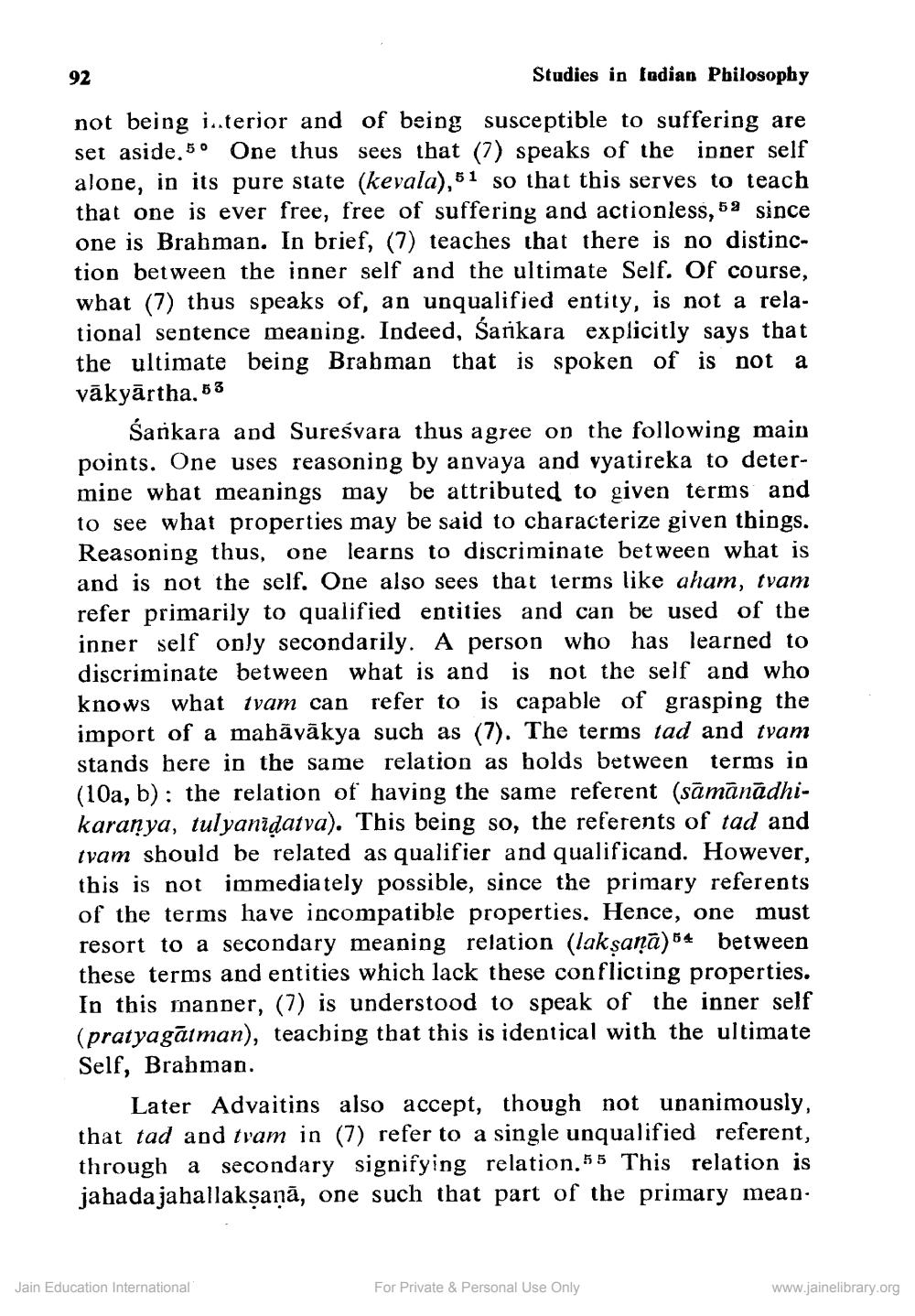________________
92
Studies in Indian Philosophy
not being i..terior and of being susceptible to suffering are set aside. 5° One thus sees that (7) speaks of the inner self alone, in its pure state (kevala), 51 so that this serves to teach that one is ever free, free of suffering and actionless, 58 since one is Brabman. In brief, (7) teaches that there is no distinction between the inner self and the ultimate Self. Of course, what (7) thus speaks of, an unqualified entity, is not a relational sentence meaning. Indeed, Sarikara explicitly says that the ultimate being Brabman that is spoken of is not a vākyārtha, 53
Sankara and Sureśvara thus agree on the following main points. One uses reasoning by anvaya and vyatireka to determine what meanings may be attributed to given terms and to see what properties may be said to characterize given things. Reasoning thus, one learns to discriminate between what is and is not the self. One also sees that terms like aham, tvam refer primarily to qualified entities and can be used of the inner self only secondarily. A person who has learned to discriminate between what is and is not the self and who knows what tvam can refer to is capable of grasping the import of a mahāvākya such as (7). The terms tad and tvam stands here in the same relation as holds between terms in (10a, b): the relation of having the same referent (sāmānādhikaranya, tulyanidatva). This being so, the referents of tad and tvam should be related as qualifier and qualificand. However, this is not immediately possible, since the primary referents of the terms have incompatible properties. Hence, one must resort to a secondary meaning relation (laksaņā) 54 between these terms and entities which lack these conflicting properties. In this manner, (7) is understood to speak of the inner self (pratyagātman), teaching that this is identical with the ultimate Self, Brabman.
Later Advaitins also accept, though not unanimously, that tad and tvam in (7) refer to a single unqualified referent, through a secondary signifying relation.55 This relation is jahada jahallaksaņā, one such that part of the primary mean.
Jain Education International
For Private & Personal Use Only
www.jainelibrary.org




